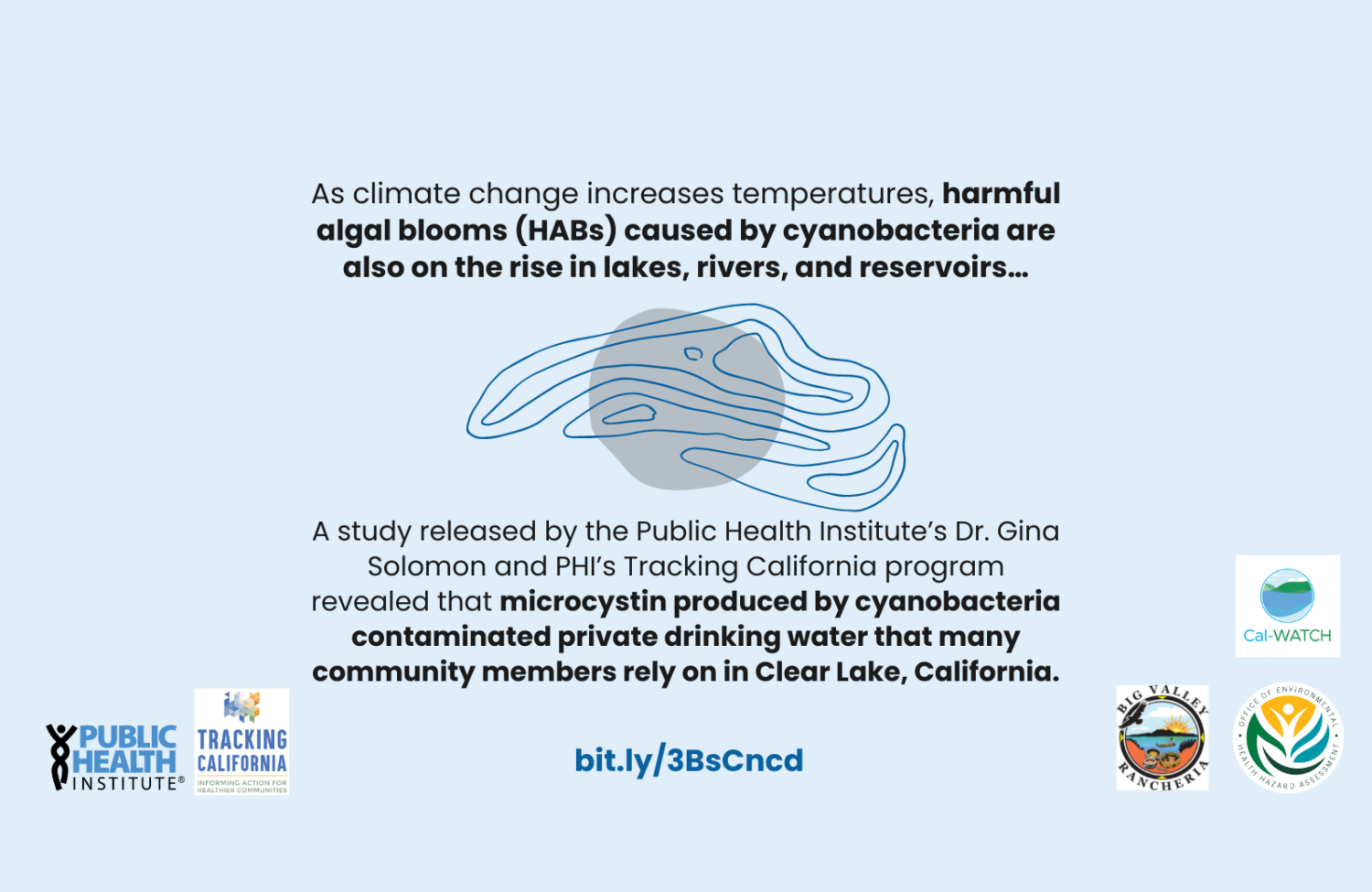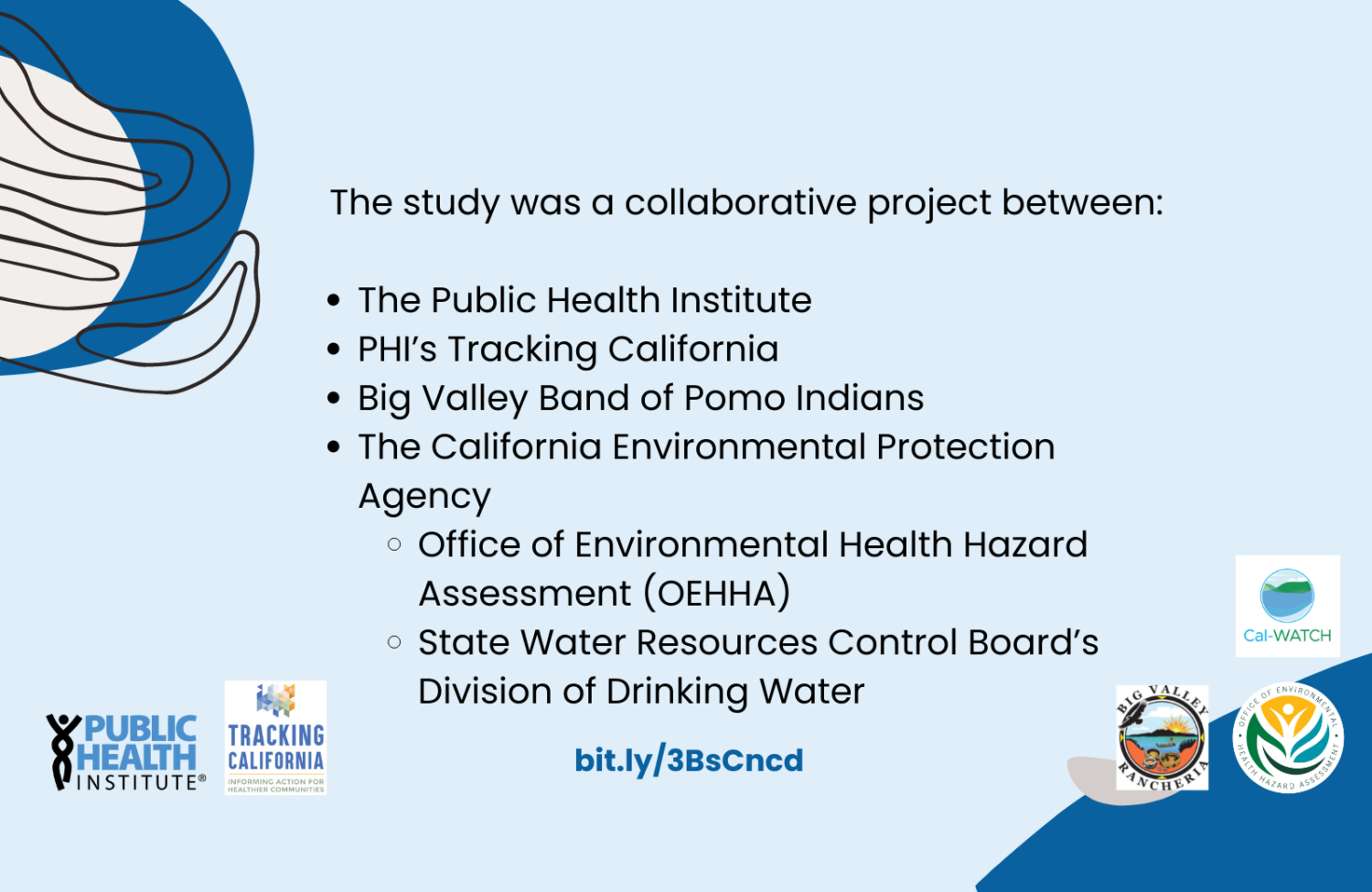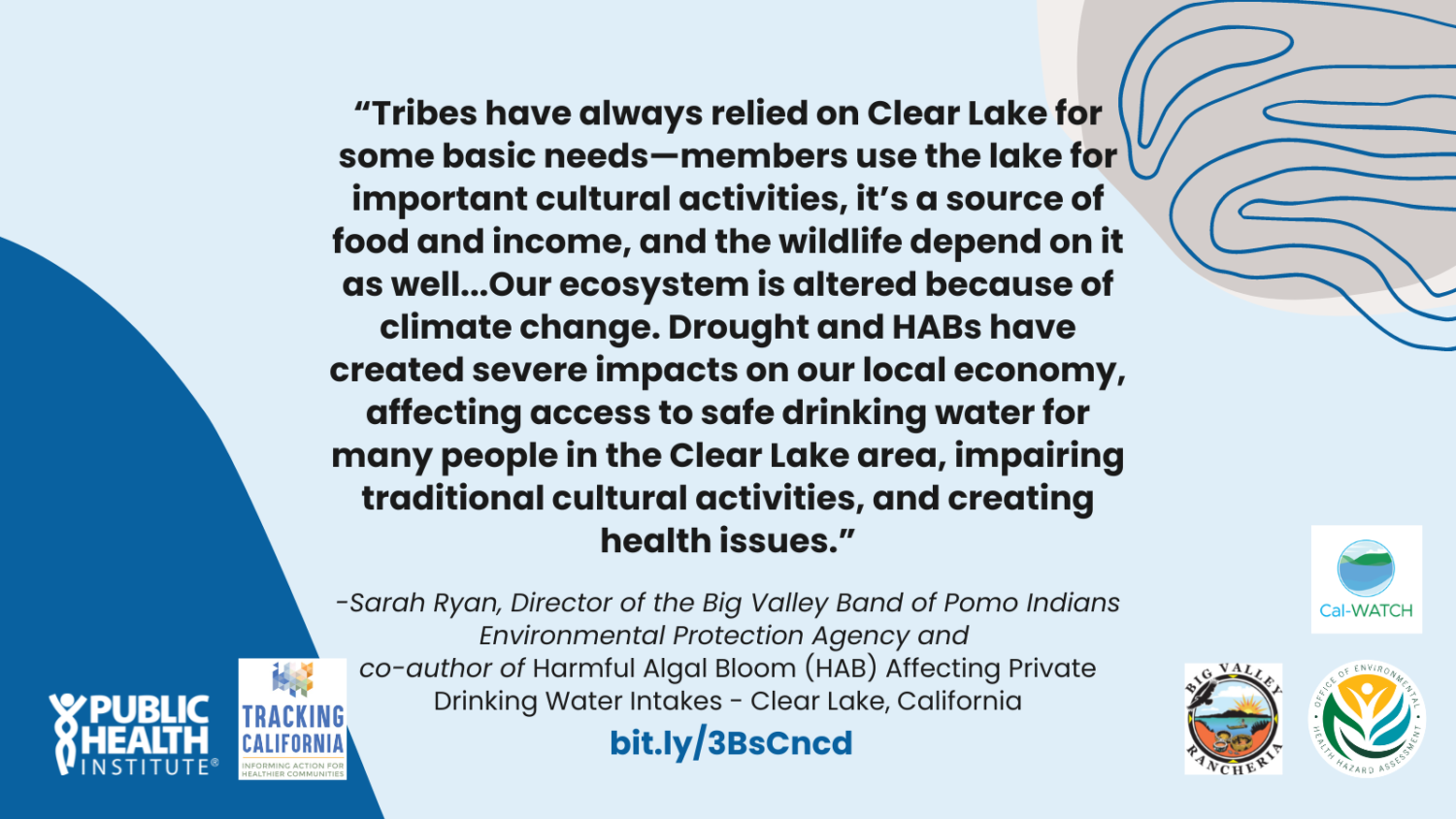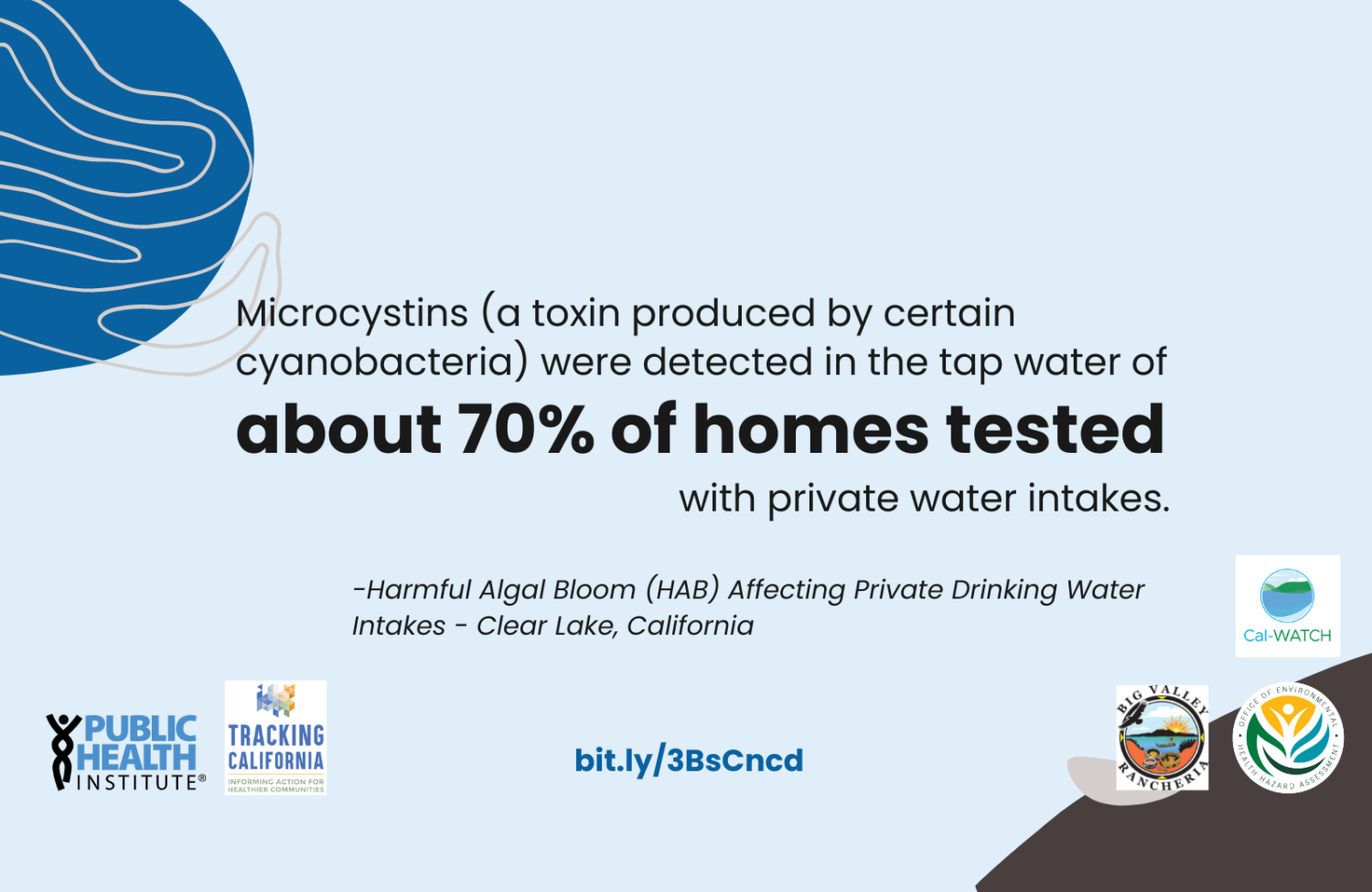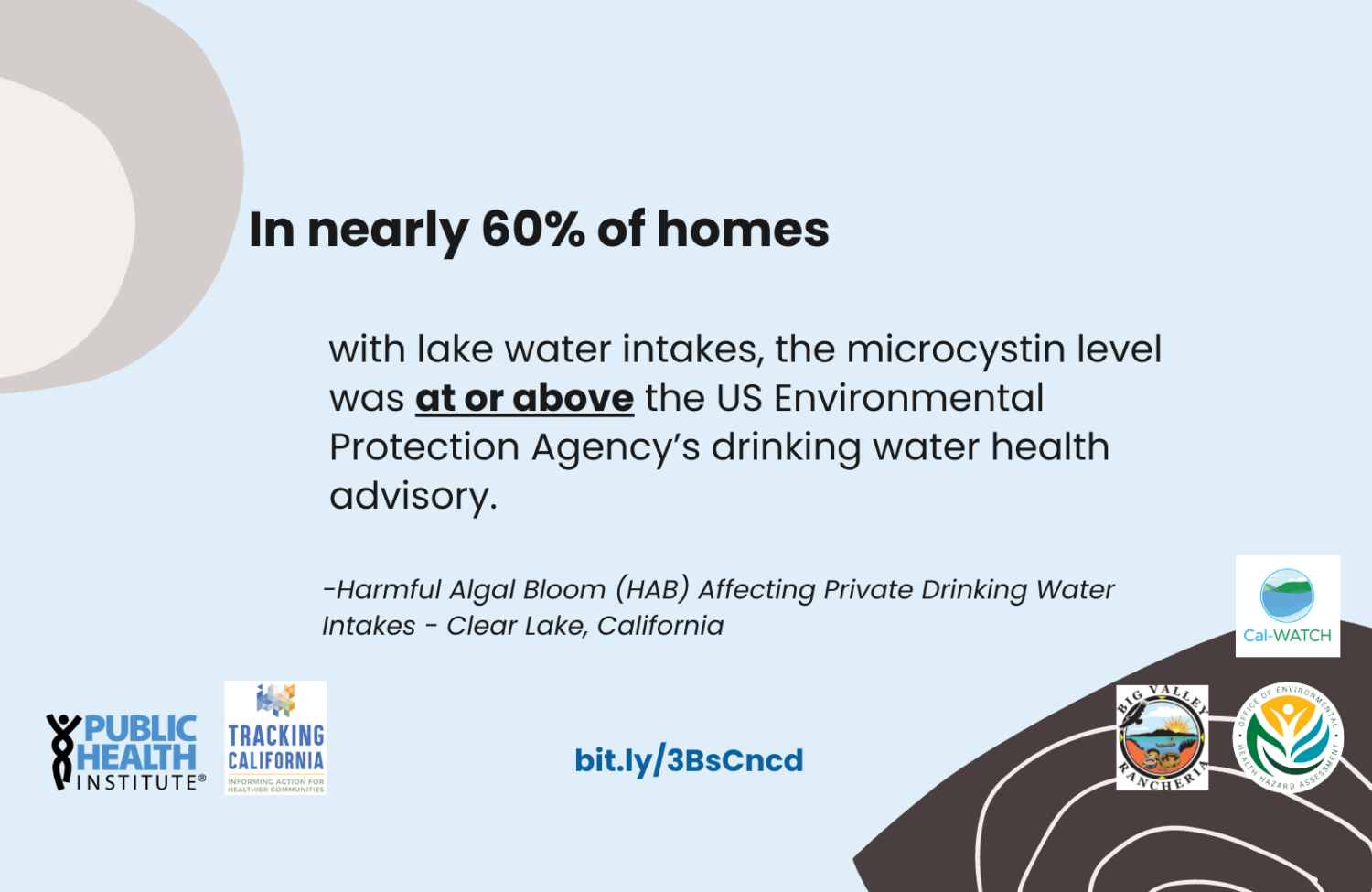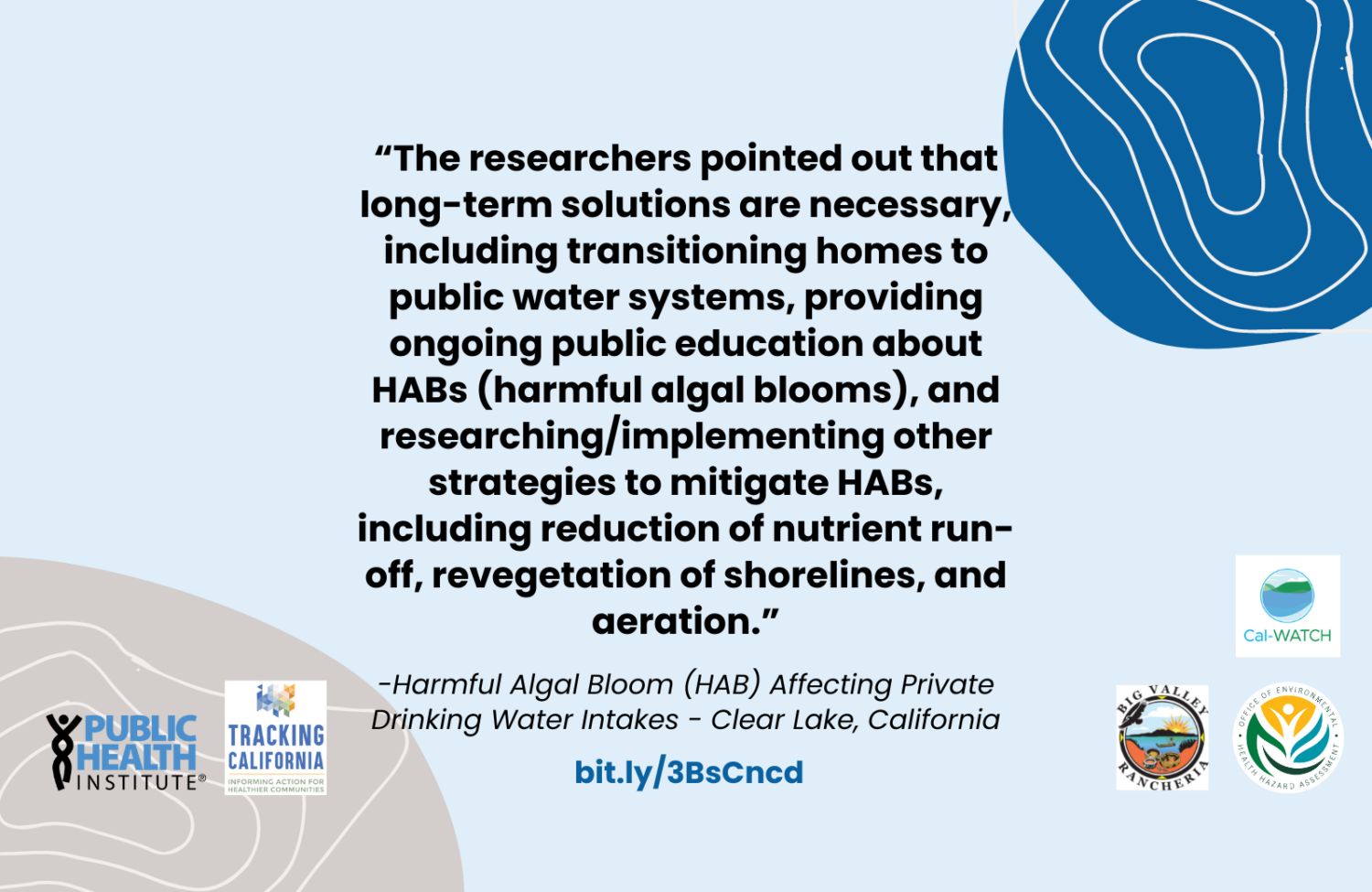
Press Release
Harmful Toxins from Algal Bloom are Contaminating Drinking Water, According to a New Study in Clear Lake, CA
-
Focus Areas
Environmental Health -
Issues
Climate Change -
Expertise
Research – Quantitative -
Programs
Tracking California
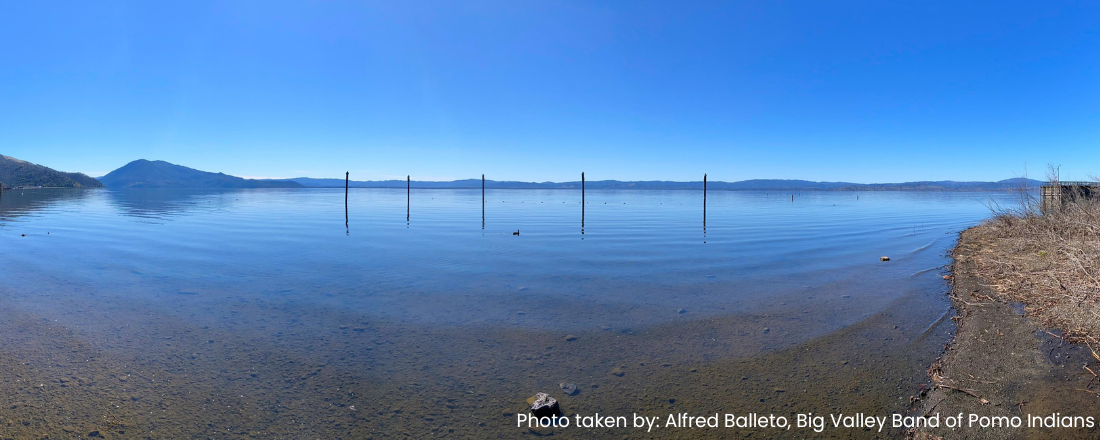
As climate change increases temperatures, harmful algal blooms (HABs) caused by cyanobacteria are on the rise in lakes, rivers, and reservoirs, posing a health threat to humans, domestic animals and wildlife. A study published by the Public Health Institute’s Dr. Gina Solomon and PHI’s Tracking California program revealed that microcystin, a toxin produced by cyanobacteria, contaminated private drinking water that many community members rely on in Clear Lake, California.
Click here to read the full study
Clear Lake is the largest freshwater lake in the state, and over 60% of residents in Lake County receive their drinking water from the lake. An estimated 500 homes around the lake have private drinking water supplies, either lake water intakes or near-shore wells. A new study, Harmful Algal Bloom (HAB) Affecting Private Drinking Water Intakes – Clear Lake, California, published today in Morbidity and Mortality Weekly Reports, a publication of the Centers for Disease Control and Prevention (CDC), found that:
- Microcystins were detected in the tap water of 22 of 31 homes (about 70% of homes tested) with lake water intakes.
- In 18 of the 31 homes (58%) with lake water intakes, the microcystin level was at or above the US Environmental Protection Agency’s drinking water health advisory of 0.3 μg/L (maximum=3.85 μg/L).
- Microcystins were not detected in tap water of any of the homes with near-shore wells.
- The researchers noted that 17 public drinking water systems also use lake water, but these systems conducted frequent testing and used water treatment to successfully control the toxins.
The study was a collaborative project between the Public Health Institute, PHI’s Tracking California, Big Valley Band of Pomo Indians, and the California Environmental Protection Agency’s Office of Environmental Health Hazard Assessment (OEHHA) and State Water Resources Control Board’s Division of Drinking Water. Referred to as “California Water: Assessment of Toxins for Community Health” (Cal-WATCH), the study is funded by the CDC’s Environmental Health Capacity program.
Over the past decade, many locations in California and nationwide, including Clear Lake, have experienced an increase in harmful algal blooms. Cyanotoxins produced by cyanobacteria contaminate the water and can cause illness and even death in humans, domestic animals and wildlife.
“Tribes have always relied on Clear Lake for some basic needs—members use the lake for important cultural activities, it’s a source of food and income, and the wildlife depend on it as well,” said Sarah Ryan, Director of the Big Valley Band of Pomo Indians’ Environmental Protection Department and a co-author of the study. “Our ecosystem is altered because of climate change. Drought and HABs have created severe impacts on our local economy, affecting access to safe drinking water for many people in the Clear Lake area, impairing traditional cultural activities, and creating health issues,” Ryan added.
From June to November 2021, the Cal-WATCH project collected and analyzed tap water samples from households with private lake water intakes and private wells located within 50 feet of the lake and analyzed the tap water samples for microcystin.
Based on initial findings from the Cal-WATCH study and an increase in severity of HABs in Clear Lake, the local health officer issued an emergency advisory in September of 2021, advising community members with private lake water intakes in the Lower and Oaks Arms of the lake “not to drink” their tap water. State, local and tribal governments coordinated with local public water systems and provided free drinking water filling stations for the affected population. Although the drinking water advisory was lifted two months later, the severity of the bloom on the lake in 2022 has prompted renewed recreational and private intake drinking water advisories from the local health officer and the tribe.
“We will likely continue to see an increase in HABs due to climate change,” said Dr. Gina Solomon, the lead author of the new study. “This study revealed that households who rely on water directly from an affected lake are at high risk. We are encouraged that agencies are partnering for a united public health response and providing access to free drinking water as a short-term solution.”
The researchers pointed out that long-term solutions are also necessary, including transitioning homes to public water systems, providing ongoing public education, and researching/implementing other strategies to mitigate HABs, including reduction of nutrient run-off, revegetation of shorelines, and aeration.
Explore the study
Q & A with the Authors of the Study
Q1. Do all private water systems have drinking water quality risks?
A1: The potential drinking water risks depend on the source of the water and may vary over time and location. Clear Lake has water quality challenges from cyanobacteria, while other water sources may pose other challenges. All private water systems have some water quality risks because issues like bacteria are generally prevalent, and private water systems generally do not have the testing frequency or the technical and engineering capacity of many public water systems.
Q2. What did outreach look like to gain participants for the study?
A2: The area is rural and many owners do not live on their property year-round. Some owners primarily use their property as a vacation rental. People may also be skeptical of offers of free water testing. For these reasons, outreach involved multiple strategies, including postcards, door-hangers, social media, and outreach through local radio, print media and at local events. Despite these efforts, only an estimated 10% of eligible households participated in the testing. One potential barrier to recruitment was that potential participants were required to complete a short questionnaire in order to confirm eligibility and collect some basic information about their source of drinking water. Some participants may not have wished to provide this information.
Q3. Did anyone get sick from drinking the water?
A3: We did not conduct a health survey of participants as part of this study, so we did not directly ask if there were health problems associated with drinking or bathing in the water. Lake County and the interagency Harmful Algal Bloom-Related Illness Workgroup did not receive illness reports directly associated with Clear Lake household use, although illnesses potentially associated with recreational water contact in Clear Lake were reported. Because health symptoms from cyanotoxins can be relatively non-specific (e.g., gastrointestinal symptoms), it is possible that residents experienced symptoms without linking them to their household drinking water. Our team is following up to further investigate health issues in the community.
Q4. How do I find certified devices?
A4: Home water treatment is divided into two groups: point-of-entry (POE), which treats water for the entire home, and point-of-use (POU), which treats water at a dedicated faucet. Devices should be certified, installed correctly, maintained, and tested. It is especially important to replace filters at the recommended frequency. Look for symbols from the following certifying entities: IAPMO R&T; NSF International; Underwriters Laboratory (UL); Water Quality Association; CSA Group. Make sure the filter is certified to remove the contaminant that has been found in the water. It’s important that water is free of microbial contamination before installing a POU treatment device.
More information about certified devices for water treatment can be found here.
Q5. If I have a private water system, how do I know which testing to do?
A5: The Cal-WATCH team recommended testing private water system drinking water to check for contaminants at least twice yearly, including coliform bacteria, nitrates, herbicides, and cyanotoxins. Additionally, people not on public water supplies should not drink water drawn from the lake during an algal bloom, even if it is treated, because in-home treatments such as boiling, disinfecting water with chlorine or ultraviolet (UV), and water filtration units do not protect people from cyanotoxins.
For general monitoring considerations, Vermont suggests the following schedule.
Q6. For people on private systems, what are best practices for safe drinking water?
A6: Information provided to the Cal-WATCH participants included: Consult with a professional two times a year or more to ensure your system is working properly. Only drink water taken far away from algal blooms. Only drink water pumped through a filter AND disinfected. Test your water two or more times a year with a certified laboratory. Consider getting four or more neighbors to share the cost of water testing or new equipment or investigating connecting to a public water system if possible. Be aware that using chlorine during an algal bloom can release more toxins into the water. Boiling water can concentrate or increase toxins and nitrates – don’t boil water that may have nitrates or cyanotoxins.
Q7. What are solutions to this problem of cyanobacteria and cyanotoxins in drinking water of private water systems?
A7: In the short-term, local public water systems set up drinking water fill-stations for affected local residents. In the longer term, connecting private systems to public water supplies would help address the problem. Drivers of freshwater harmful algal blooms (HABs) include a combination of nutrient loads, warm water temperatures, and other water body conditions, many of which are likely to increase with climate change. Reducing nutrient pollution (e.g., from agriculture, septic systems, and storm water) is one important solution. Vegetation of shorelines and aeration or artificial water circulation may also provide benefit.
Q8. Where can I find more information about how to deal with potential cyanotoxins in drinking water?
A8: You can find information on treating drinking water in areas where cyanotoxins may be present at the following links:
Walkerton (Canada) Clean Water Center – Fact Sheet
National Collaborating Centre for Environmental Health (Canada) – Report
Work With Us
You change the world. We do the rest. Explore fiscal sponsorship at PHI.
Support Us
Together, we can accelerate our response to public health’s most critical issues.
Find Employment
Begin your career at the Public Health Institute.
